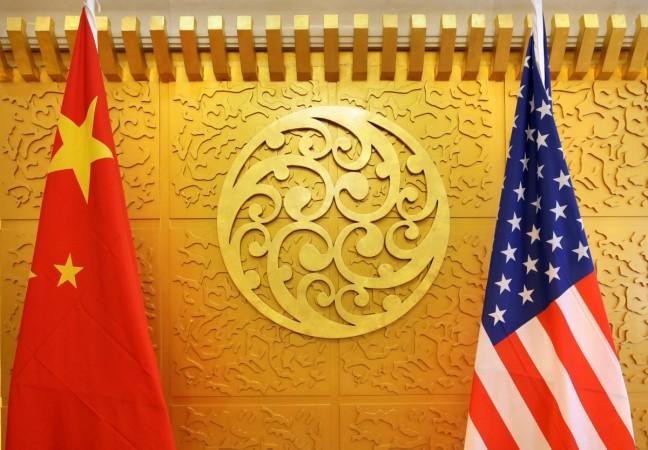
China has agreed to significantly increase its purchases of U.S. goods and services, the two countries said on Saturday, but made no mention of a $200 billion target the White House had touted earlier.
Beijing and Washington agreed they would keep talking about measures under which China would import more energy and agricultural commodities from the United States to close the $335 billion annual U.S. goods and services trade deficit with China.
A joint statement issued at the conclusion of intensive trade talks in Washington did not indicate whether the two countries would delay or drop their tariff threats on billions of dollars worth of each country's goods, which has sparked fears of a wider trade war and roiled financial markets.
"There was a consensus on taking effective measures tosubstantially reduce the United States' trade deficit in goodswith China," the joint statement said.
"To meet the growing consumption needs of the Chinese peopleand the need for high-quality economic development, China willsignificantly increase purchases of United States goods andservices."
President Donald Trump has threatened to impose tariffs on up to $150 billion on Chinese goods to combat what his administration says is Beijing's misappropriation of U.S.intellectual property through joint venture requirements and other policies that force technology transfers.
Beijing denies such coercion and has threatened equal retaliation, including tariffs on some of its largest U.S.imports - among them aircraft, soybeans and autos.
A report by China's state-run Xinhua news agency described the statement from the two governments as "vowing not to launcha trade war against each other."
While the statement said the two sides would engage at highlevels and "seek to resolve their economic and trade concerns ina proactive manner," it made no mention of tariffs.
It said there was consensus between Washington and Beijingon the need to create "favorable conditions to increase trade"in manufactured goods and services. This could be a reference to China's previous pledges to open up more economic sectors to services.
A commentary published by Xinhua on Sunday declared the statement a "good example of win-win", noting that it would help America reduce its trade deficit by increasing exports to China and allow China to diversify and raise the quality of its imports.
It also argued that China has always resisted any "unreasonable demands" by the United States, never compromising or accepting restrictive conditions.
The commentary added that a resolution to the trade dispute will be complicated, difficult and take a long time.
U.S. LNG EXPORTS
The United States will also send a team to China to work outthe details of increased agricultural and energy exports, thecountries said, without specifying timing.
A senior U.S. official said that during discussions with amember of President Xi Jinping's office, China was considering apackage that relied on major purchases of U.S. liquefied naturalgas, including a contract for a U.S. firm to build LNG receivingand processing facilities in China.
The package, which also would include new commitments onintellectual property protections, could be agreed by apotential mid-year visit to Washington by China's Vice PresidentWang Qishan, the official said.
Trump made cutting the U.S. trade deficit with China apromise in his presidential campaign.
During an initial round of talks earlier this month inBeijing, Washington demanded that China reduce its trade surplusby $200 billion - a figure most economists say is impossible toachieve because it would require a massive change in thecomposition of commerce between the two countries.
As of late Thursday, U.S. officials were still pressingChina to agree to that size reduction.
But economists say that level would be extremely difficultto achieve, especially as U.S. tax cuts are spurring demand formore imports.
The $200 billion figure is equivalent to about 90percent of Boeing Co's annual aircraft production and islarger than all of the United States' global annual agriculturaland oil exports.
Eswar Prasad, a Cornell University trade professor andformer head of the International Monetary Fund's China division,said that Beijing had clearly balked at a specific quantitativecommitment.
"It is a very limited and tentative agreement mainlydesigned to deescalate tensions," Prasad said of the jointstatement.
IP VAGUENESS
The statement was vague on the Trump administration's coreintellectual property complaints, saying that both countries"attach paramount importance to intellectual propertyprotections ... China will advance relevant amendments to itslaws and regulations, including the Patent Law.
There are concerns among some legislators and trade expertsthat Trump could give priority to a narrower trade deficit overtackling what they say is China's abuse of intellectual propertyrights. Any deal under which China would import more goods couldeasily be reversed, economists say.
The statement made no mention of whether there would be arelaxation of paralyzing restrictions on Chinesetelecommunications equipment maker ZTE Corp imposed last month by the U.S. Commerce Department.
The action, related to violation of U.S. sanctions on Iran,banned American companies from selling semiconductors and othercomponents to ZTE, causing the Shenzhen-based company to ceaseoperations.
Earlier this week, Trump tweeted that he directed theCommerce Department to put ZTE back in business and said thecompany's situation was part of an overall trade deal withChina.
















